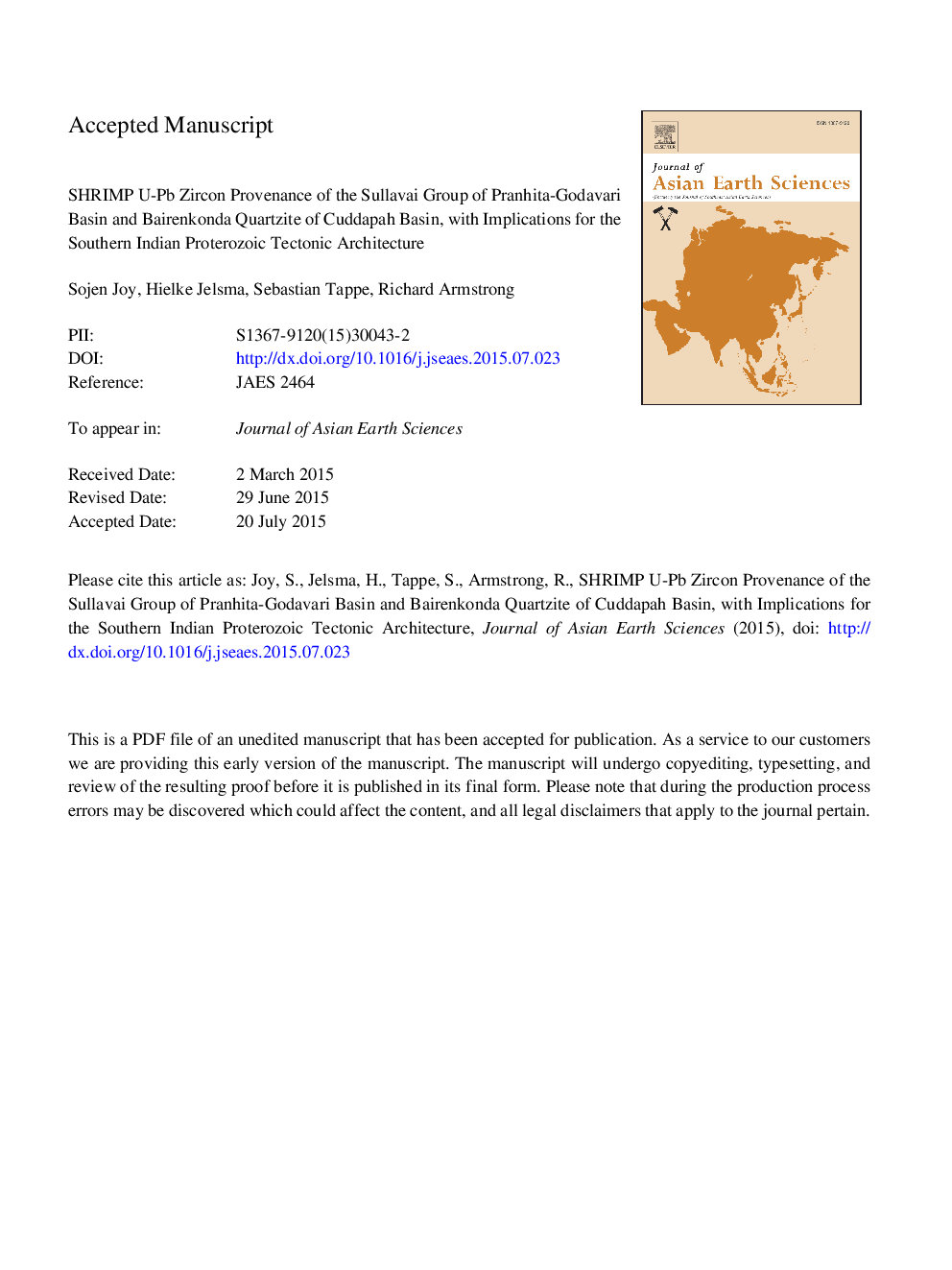| کد مقاله | کد نشریه | سال انتشار | مقاله انگلیسی | نسخه تمام متن |
|---|---|---|---|---|
| 6444245 | 1640358 | 2015 | 54 صفحه PDF | دانلود رایگان |
عنوان انگلیسی مقاله ISI
SHRIMP U-Pb zircon provenance of the Sullavai Group of Pranhita-Godavari Basin and Bairenkonda Quartzite of Cuddapah Basin, with implications for the Southern Indian Proterozoic tectonic architecture
دانلود مقاله + سفارش ترجمه
دانلود مقاله ISI انگلیسی
رایگان برای ایرانیان
کلمات کلیدی
موضوعات مرتبط
مهندسی و علوم پایه
علوم زمین و سیارات
زمین شناسی
پیش نمایش صفحه اول مقاله

چکیده انگلیسی
Proterozoic basins in cratonic India, referred to as “Purana Basins”, cover about 20% of the Archean basement of the subcontinent. Although the stratigraphy of most of these basins has been well established, it is only recently that radiometric age constraints have been obtained for some of the sedimentary sequences. This study provides new data for two of the Purana Basins in southern India using SHRIMP U-Pb analysis of detrital zircons. For the Pranhita-Godavari Basin, an age limit of 709 Ma is provided for the age of deposition of the Sullavai Group. This prolongs the duration of Proterozoic sedimentation to approximately one billion years (ca. 1700-709 Ma) and establishes the Venkatpur Sandstones of Sullavai Group as the youngest Purana Basin succession identified in India so far. A major zircon provenance age peak at about 1000 Ma, and zircon ages between 800 and 750 Ma, are correlated with major tectonothermal events in the Eastern Ghats Mobile Belt (EGMB) and intrusion of granites and associated pegmatites at that time. The main provenance area of the Venkatpur Sandstones is interpreted to be the EGMB, with subordinate supply of sediments from the Eastern Dharwar craton. It is suggested that portions of the EGMB must have been an integral part of Peninsular India at the time of deposition of these sediments. For the Cuddapah Basin, new U-Pb detrital zircon age constraints are provided for the Nallamalai Group sediments (Bairenkonda Quartzites within the Nallamalai Fold Belt), the youngest population of which yielded an age of ca. 1550 Ma. This age is similar to the emplacement age of the Vinukonda Granite (1589 ± 4.4 Ma) in the Nellore Schist Belt. This suggests that the Nellore Schist Belt was a source region for the Bairenkonda Quartzites and that deposition continued until at least 1550 Ma. A high-precision Archean age (ca. 3366 Ma) for a detrital zircon grain indicates the presence of Paleoarchean components within the sediment source region. Provided that Paleoarchean rocks are as yet unknown from the largely juvenile Neoarchean Eastern Dharwar craton, there exists a possibility that the Nallamalai Group was sourced from the Ongole Domain of the EGMB.
ناشر
Database: Elsevier - ScienceDirect (ساینس دایرکت)
Journal: Journal of Asian Earth Sciences - Volume 111, 1 November 2015, Pages 827-839
Journal: Journal of Asian Earth Sciences - Volume 111, 1 November 2015, Pages 827-839
نویسندگان
Sojen Joy, Hielke Jelsma, Sebastian Tappe, Richard Armstrong,